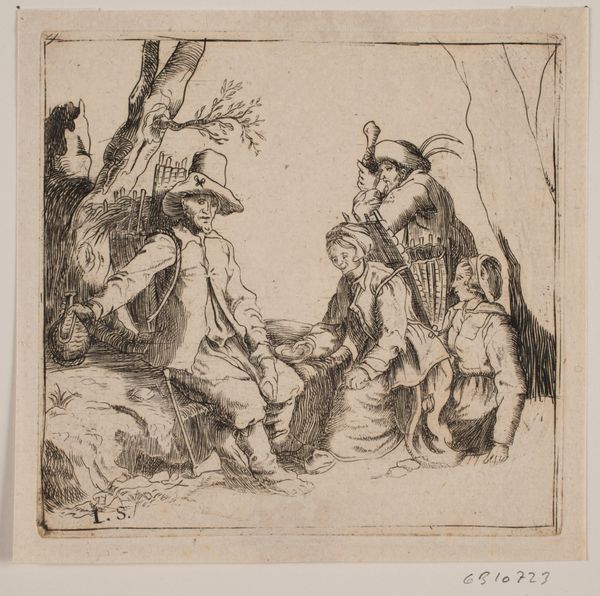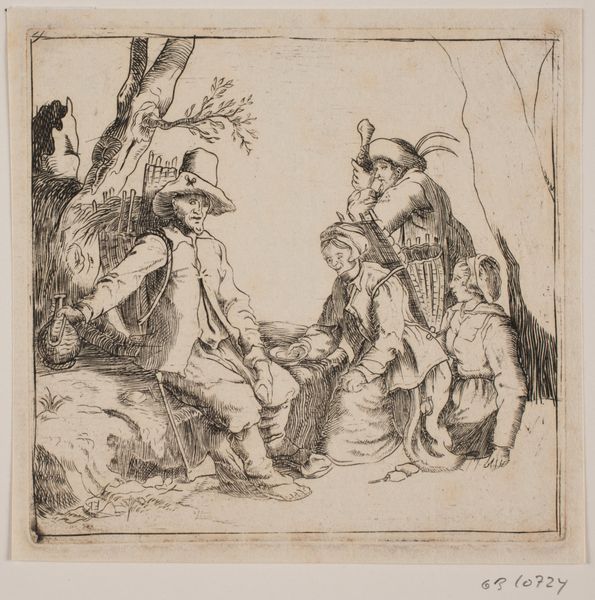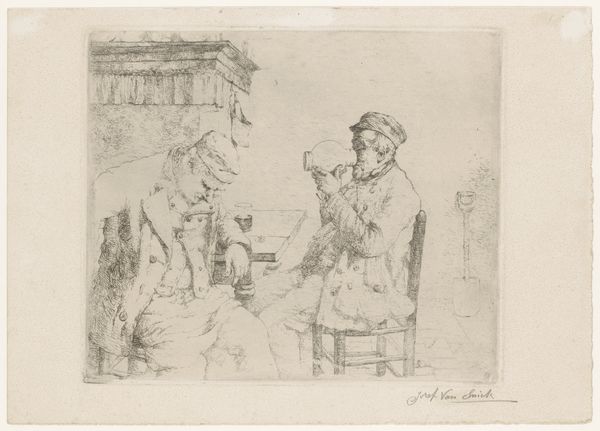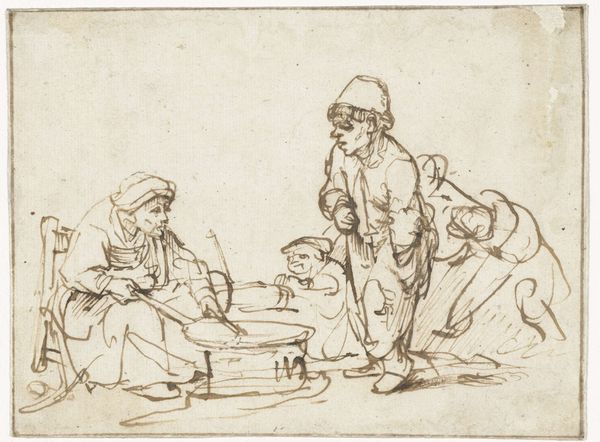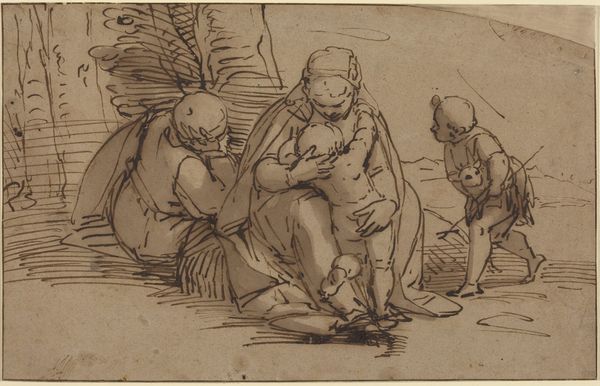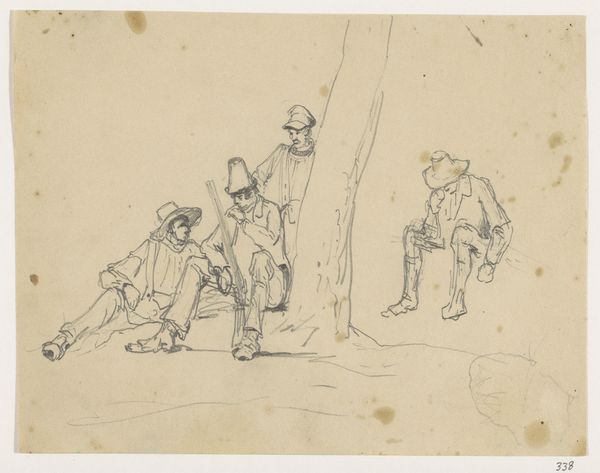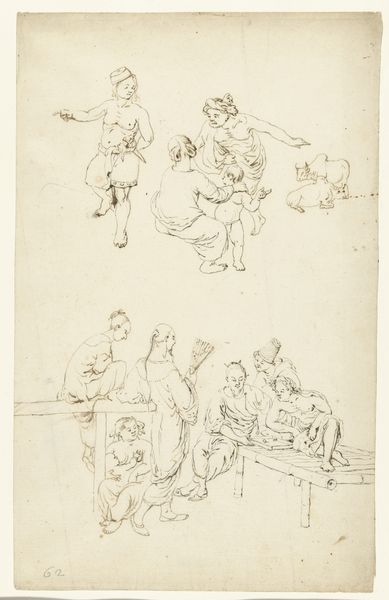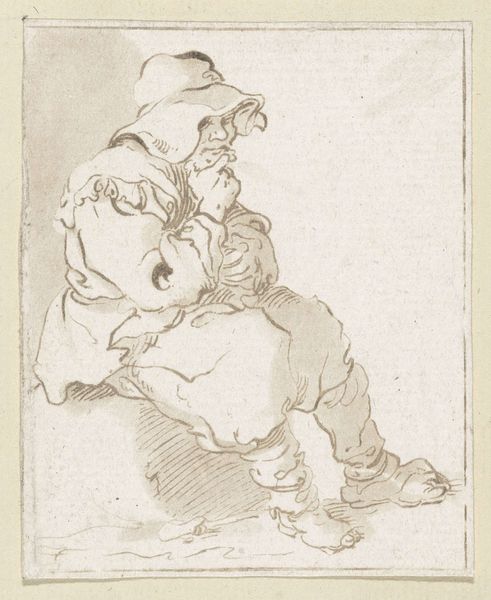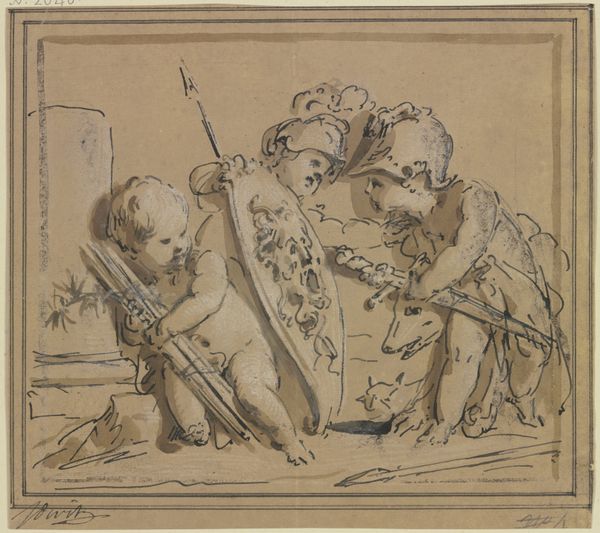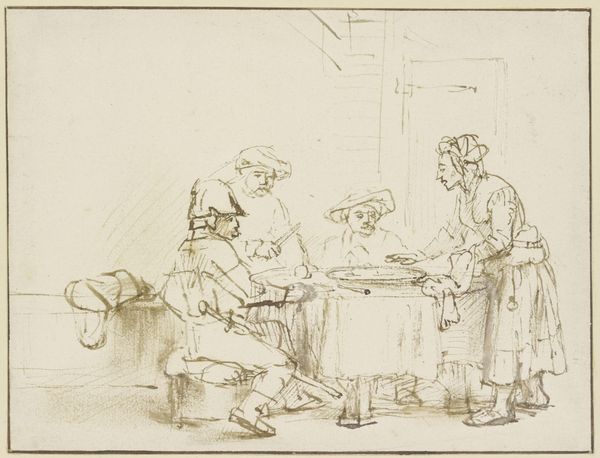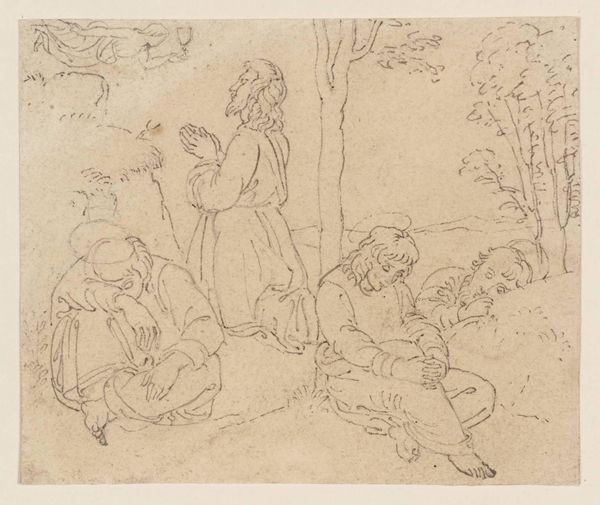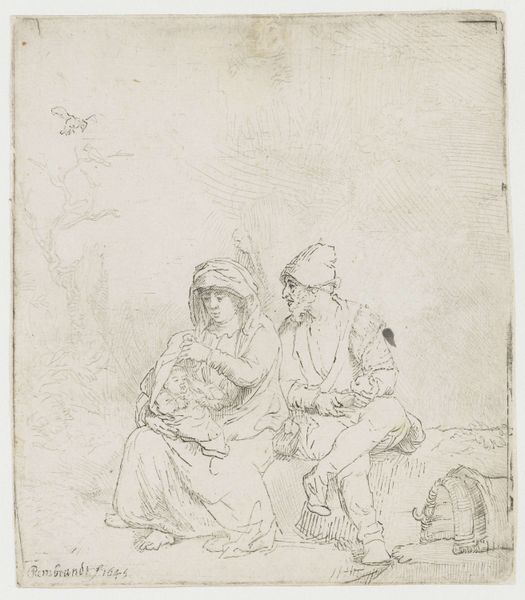
drawing, print, paper, graphite
#
portrait
#
drawing
# print
#
paper
#
graphite
#
genre-painting
Dimensions: 165 × 164 mm
Copyright: Public Domain
Curator: Right, let's take a look at this sketch. It's titled "Two Men at a Table," attributed to George Morland, and it's currently held at The Art Institute of Chicago. Made with graphite on paper, it seems like a quick study, doesn’t it? Editor: A study, yes, but oh so evocative! I get this immediate feeling of hushed camaraderie, like eavesdropping on a weighty conversation at a hidden tavern. You can almost smell the beer and hear the clinking glasses, even with the spare lines of graphite. Curator: Indeed! Morland was quite interested in scenes of everyday life, so-called "genre painting", and how it reflected on contemporary English society. This seems to capture the conviviality of ordinary men in an informal setting, which might have carried social significance then. Pubs were hotbeds for political discussion at the time. Editor: You know, to me, the sketching style amplifies that sense of being in-the-moment. The rough marks, the hints of tone... it's less a posed portrait, and more of a glimpse into these guys' afternoon. And how about that earthenware jug on the table between them? It suggests something comforting and ancient. It anchors them, don’t you think? Curator: Perhaps! Morland wasn't necessarily focused on aesthetic refinement, more so documenting these fleeting instances. Notice how he notes colours directly onto the drawing, the small inscriptions around their bodies; he's literally sketching the world he's witnessing. Editor: Which makes it intimate, raw, human. Even though the rendering is straightforward, it’s those subtle tonal shifts that elevate it. Look how the graphite almost breathes with their shapes. It really does show us that the mundane holds its own magic. This seemingly off-the-cuff creation resonates beyond its surface; I'm moved. Curator: Yes. Through the quick, scribbled aesthetic of "Two Men at a Table," Morland offers us access to a casual scene of English life—making it meaningful within its socio-historical context, indeed. Editor: Quite. This brief peek into a seemingly commonplace encounter makes us consider and reimagine those moments, making us question how they weave into a deeper cultural tapestry, really.
Comments
No comments
Be the first to comment and join the conversation on the ultimate creative platform.
